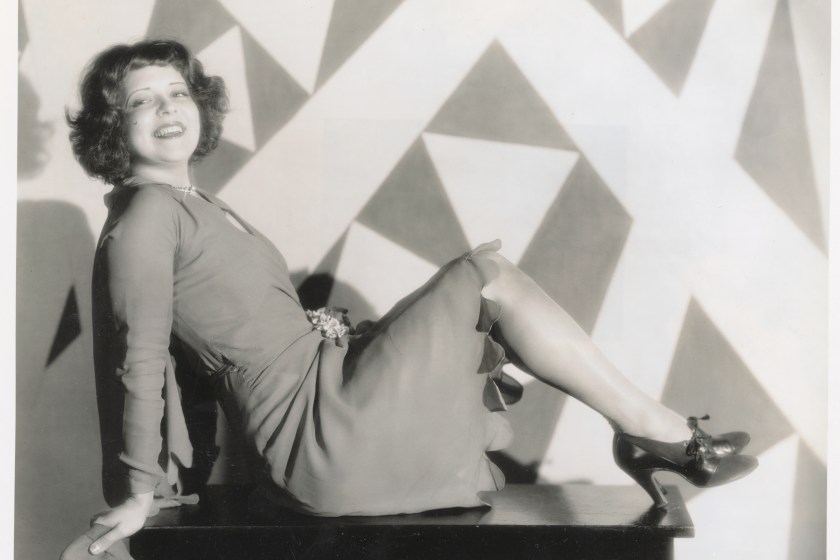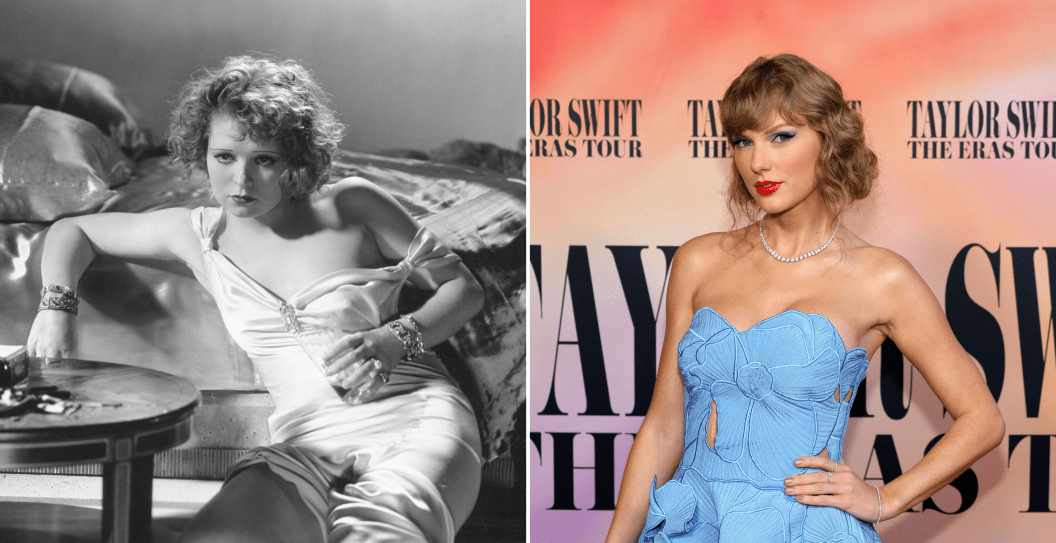Taylor Swift announced her upcoming album, The Tortured Poets Department, in the middle of her Grammys acceptance speech on Feb. 4. She then went backstage and promptly released the cover art on Instagram as well as some lyrics scribbled in pen. The next day, she posted the full set list for the album. Not the lyrics, mind you. But the titles alone had the internet buzzing with all kinds of theories about the songs.
The final track on the album, due out on April 19, is titled "Clara Bow." Naturally, Swifties the world over did a deep dive into who she is. It was likely the most speculation Bow had received since her heyday in the 1920s. Back then, the actress frequented the cover of every tabloid magazine in the country.
Today, it's commonplace for gossip mags and social media threads to pick apart every aspect of a star's life, from her body to her dating history. But Bow — whose lead role in the film "It" gave rise to the term "It Girl" — became a tragic early example of how fame can wreak havoc on a young star.
Keep going to learn more about the whirlwind life and career of Clara Bow and why Swift may have dedicated a song to her.
Who Was Clara Bow?

Bettmann/Getty Images
Clara Bow starred in dozens of silent films during the 1920s. Her role in the 1927 film "It" made her a household name. The term "It Girl" endures as a way to describe a star at the pinnacle of the zeitgeist. What also endures is the cruel treatment that accompanies a young woman as she reaches the height of fame.
The late star was born in Brooklyn, New York, in 1905. Bow had a horrendous childhood — sexually abused by her father and neglected by her mentally ill mother. While still in high school, she won a beauty contest, which earned her a ticket to Hollywood.
She had her breakout role in the 1922 film "Beyond the Rainbow." Though Bow had only a small part, she stole the show. Soon, she was playing the starring role in films like "Down to the Sea in Ships" (1922), "The Plastic Age" (1925), "Mantrap" (1926), "Kid Boots" (1926), and "Dancing Mothers" (1926).
"It," which premiered in 1927, was a box office smash, propelling Bow to superstardom. She became an icon of the era. With her flapper dress, bob hairdo and heart-shaped lipstick, she was a symbol of sexual liberation and female empowerment during the roaring '20s. Women across the world imitated her style, and some say she served as the inspiration for the cartoon character Betty Boop.
That same year, Bow starred in the movie "Wings," where she played a woman caught in a love triangle between two World War I pilots. The film made history as the first to win Best Picture at the Academy Awards.
After her back-to-back success with "It" and "Wings," Bow's fame became unrelenting. Tabloids dug up everything they could about her, using her carefree and promiscuous onscreen persona as fodder for baseless rumors. She became known as a "freak" among some of her Hollywood peers for refusing to be anyone other than her unapologetic self.
The worst screeds came after she sued her secretary, Daisy De Voe, for stealing money, jewelry and personal documents. In turn, De Voe set out to ruin her. De Voe submitted into evidence canceled checks for Bow's lavish nights out, payments for whiskey (which were illegal under Prohibition) and love letters.
In the aftermath of the trial, theaters began to pull Bow's films. She was ostracized by her contemporaries due to her notoriety. By May of 1931, Bow checked into a sanatarium.
She returned to make two more films, then left Hollywood for good, settling down with her husband on a Nevada cattle ranch.
Some say that Bow's downfall was caused by her thick Brooklyn accent, which didn't suit the speaking films — or "talkies" — that took over theaters by the end of the 1920s. But box office numbers from her "talkies" suggest this is wildly untrue. All signs point to her light being extinguished by the constant harassment from tabloids and snobbish Hollywood elite. It also didn't help that her husband, cowboy star Rex Bell, resented her career. He didn't like her "showing herself off."
Bow never returned to Hollywood and struggled with mental illness later in life. She died in 1965 at the age of 60.
Why Did Taylor Swift Name a Song After Clara Bow?

(Photo by Theo Wargo/Getty Images for Time Inc)
Bow's tragic life serves as a cautionary tale for fame in Hollywood — one that we never learned from. "It Girls" continue to suffer intense scrutiny for simply living their lives. Swift is no stranger to this scrutiny. Especially when it comes to whom she dates. Like Clara, she's been called promiscuous for merely stepping outside with a man. Perhaps Swift, who is undeniably the current "It Girl," is making a nod to the OG with her final song of the album.
I think this is likely the case. But on a deeper level, Bow's career as a silent film actress could also hold significance. When a star is swept up in a media frenzy, rumors and outright lies run rampant as soon as they've been fabricated. Oftentimes, a star doesn't even have a chance to defend themselves before irreparable damage has been done to their reputation. And when they do respond, many people have already made up their minds. Like the star of a silent film, they have no voice.
For the time being, all we can do is guess. To uncover the true meaning behind "Clara Bow," we'll have to wait for the album to drop on April 19.




